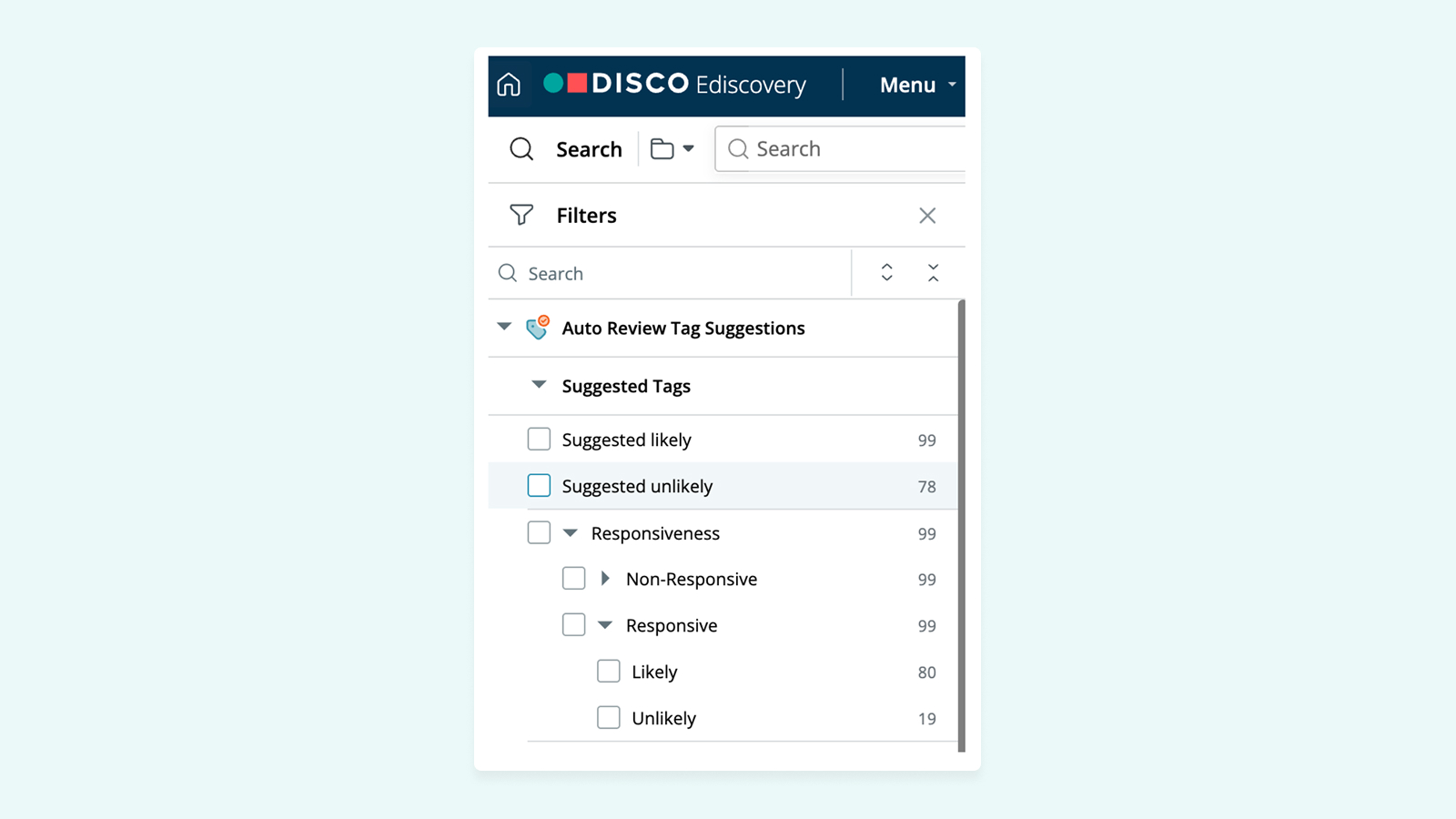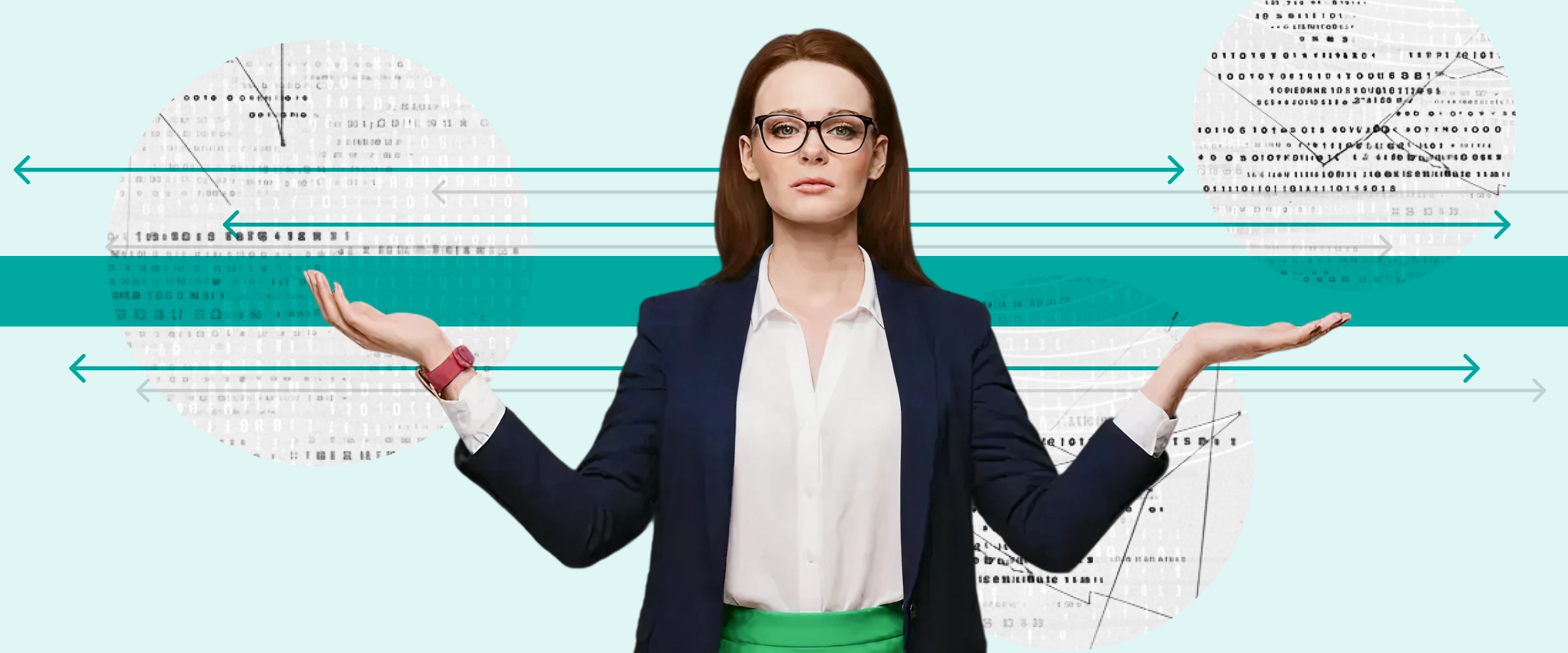⚡️ 1-Minute DISCO Download
Firms and corporations across the globe are turning to AI-powered ediscovery to save costs, reduce document review populations, institutionalize knowledge, and develop ever better relationships with savvy cost-focused clients and businesses. However, with so much noise in the legal tech market, it’s easy to think all AI-powered ediscovery software solutions were created equal.
To dispel that myth, Tripp Hemphill, VP of Enterprise Markets at DISCO, took the main stage at the Legal Geek conference to explain the history of artificial and its intersection with legal technology. (Transcript below the video.)
Transform ediscovery with AI: Video transcript
Tripp Hemphill: Good afternoon fellow Legal Geeks! I'm Tripp with DISCO, and it's both a pleasure and a privilege to be here with you today.
At DISCO, we love and take every opportunity to talk about legal innovation and practice. It's literally what our company was founded on almost 10 years ago by a group of lawyers in Houston, Texas who thought they could bring innovation to the legal space, and specifically to the dispute realm. And so today I'm particularly excited to share with you some concepts, ideas, and facts around artificial intelligence that will hopefully change your perspective on artificial intelligence and practice -- and more importantly, change your usage of AI in practice.
As we get started here, a little bit of education. The essence of AI -- integrated AI and legal edisclosure technology -- is, put simply, two things.
Number one: to help case teams find evidence faster. And two, to drive down costs as data sets grow larger and larger every year and the cost to pursue legal disputes increases year over year. Integrated AI can help significantly.
So, how does it actually work? Well, it uses a sophisticated multi-layered computing approach called deep learning. Deep learning in essence wires together multiple machine learning capabilities in a very powerful and modular way that can be used towards real-world information challenges.
Learn more: Generative AI for Litigation: What You Really Need to Know 💡
Deep learning and fast text
The first of these deep learning components is a technology called fast text. Fast text was actually developed by Meta's AI research lab. What it does is, it takes words and it converts them to numbers. But it does this in a very unique way that actually encapsulates the meaning of words in the context of words.
Because words with similar meanings often occur in similar contexts, fast text is able to extract the meanings of words to an astonishing degree. It learns, for instance, that the two words "king" and "queen" are very similar to the words "man" and "woman." These relationship sequences generated by fast text are then mapped to a 360-degree plane and used for the next step in the deep learning process.
Enter the convolutional neural network (CNN)
The second component takes these sequences from fast text and puts them in order through a convolutional neural network (CNN for short) to begin predicting and making recommendations to the legal team.
Related: A Primer on How Lawyers Can Benefit from Artificial Intelligence 💡
Here's an example to try to bring this to life: Think about this process in the context of facial recognition. When a CNN analyzes an image to determine whether there actually is the presence of a human face, it does it in a very layered and iterative approach, growing in the sophistication and complexity as it goes through the layers.
At the basic layers, it's looking for things like skin tone and texture that often indicate the presence of a human being that's more sophisticated layers it's looking for things like the shape of eyes, shape of nose, shape of ears. Higher-level, higher layers build on previous layers to ultimately determine and confirm that a face really is present in the frame.
Artificial intelligence and document review
When it comes to assessing documents, CNNs take a very similar approach, in that they build on a multi-layered process during early stages of the process. For docs, they look for words in the document that are related to particular concepts or topics, or just categories. In later steps, they begin to look at phrases and sentences that might be of interest by breaking down documents layer by layer. The CNN can consider the relationships words have to each other and begin making recommendations that are of high value to the legal team.
Related: How to Use Generative Artificial Intelligence for Document Review 💡
These recommendations can happen much faster and much more accurately than any previous technologies used for this purpose.
So how does this actually play out when a lawyer logs into an application like DISCO? How does deep learning really impact the practice of law?
Well rather than telling the lawyers what to do, the AI actually sits in the background, much like a diligent legal assistant who's watching and learning constantly based on the signals that it's receiving from the lawyers who are working on the document sets. It's then building accurate perceptions, and it's actually building perspectives on every document.
Once it's witnessed enough human signals, the AI begins to asynchronously (or, on its own schedule) deliver recommendations to the case team. As AI suggestions are either accepted or rejected by the legal team, the machine's understanding increases and the recommendations improve.
This collaborative and iterative workflow process continues until together the lawyer and the AI have successfully found the vast majority of all relevant material in a data set whilst having only reviewed a fraction of the documents actually in the data set.
Legal tech of the past: Document boxes, databases, and search
Back in the days when information was stored on paper, discovery projects looked like sifting through boxes and boxes of dusty business records. This is actually where I began my career in this industry, and I can tell you it wasn't a fun experience. Lawyers had to flip the lid on every single box, thumb through every page to find the documents that are of interest to their case. They had to do this with every document, because of the natural distribution of documents in the boxes -- so they had to do this process for every single box. It was dusty, it was painful -- lots of paper cuts, not fun.
Related: Legal Time Warp: If Enron Had DISCO Technology 🤔
For the past 20 years or so, databases have come along to help provide lawyers with the ability to search across large amounts of data -- and to do that from the comfort of their offices, or home offices, or hotel rooms, or airplanes, even.
Search terms were employed to help focus the review team and reduce the cost of this process. However, despite the best efforts of case teams to build sophisticated and complex search terms, we all know -- and it's been proven -- that search terms are only moderately effective at finding responsive documents in a greater corpus. And unfortunately they also often leave behind (in the way of false negatives) documents that should have been in the review set and are critical to the case.
Related: Quick Guide to Ediscovery Rules and Best Practices 💡
AI brings new possibilities to disclosure
Thankfully, technology has moved on, and we can move beyond the days where search terms were your best and only shot at finding the documents that you're looking for in a case. Today AI can, much like a magnet, prioritize documents in front of the review queue and bring fact evidence to the case team in a matter of days rather than weeks or months or even longer.
Leveraging AI in the disclosure process is frankly just game-changing to the case teams that I work with. From their timelines to their budgets to the development of their case strategy informed by fact evidence -- and most importantly to the outcomes that they're driving to their end clients.
Taking deep learning to the next level: Imagine if you can take the learnings and intelligence that you developed on a single case and bring it to your next case -- or maybe even to your next 200 cases.
Well, with cross-matter AI capabilities, you can do just that. You can take highly accurate AI models and use them matter over matter. As these models are used matter over matter, they begin to improve, because they're seeing more and more documents and more and more signals from different case teams.
Our corporate clients curate these cross-matter models to appreciate the uniquenesses of their corporate information and business dealings, while our law firm clients build them around their practice areas.
Related: What You Really Need to Know About Generative AI for Corporate Law 💡
Their areas of expertise to be used matter over matter, client over client. So as an example: Just imagine you are an employment lawyer at a firm, and you specialize in harassment cases. You represent companies in those matters, and in any given year, you might see dozens, maybe hundreds of claims pass your desk. You and your team might review and tag tens of thousands, maybe even hundreds of thousands of documents that are related to harassment.
Imagine the power and the efficiency gains if you could roll up all of those individual moments of learning and use that model case after case from the get-go: very, very powerful.
We're only beginning to understand the use cases that our clients are coming up with for the advanced techniques and unique capabilities of cross-matter AI. So we look to this as a really ripe area of innovation for years to come.
Learn more about the benefits of ediscovery: The Ultimate Guide to Ediscovery (download) ⬇️
Get started with DISCO's AI-powered ediscovery
DISCO’s category-leading ediscovery platform is now more powerful and easier to use than ever with the introduction of our generative AI suite, Cecilia AI. From Cecilia Q&A (our in-platform chatbot that can answer any question about your case), to Cecilia Timelines, Cecilia Deposition Summaries, and Cecilia Auto Review, we're taking the tedious parts out of your legal workflows so you can more easily and effectively practice law.
See the power of generative AI-powered ediscovery: Request a demo.






%20(1).jpeg)
.avif)







.png)